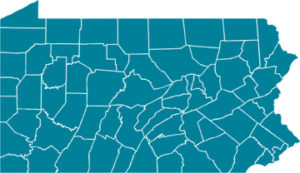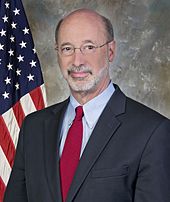SNAP Asks PA Delegation for Help From COVID-19 Relief Bill
The next federal COVID-19 relief bill should include more resources for the Provider Relief Fund, SNAP has told members of Pennsylvania’s congressional delegation.
 The bill also should include additional targeted funding for safety-net hospitals, help with staffing, an extension of the current moratorium on the Medicare sequestration, and forgiveness for safety-net hospitals for loans they received under the Medicare Accelerated and Advance Payment Program.
The bill also should include additional targeted funding for safety-net hospitals, help with staffing, an extension of the current moratorium on the Medicare sequestration, and forgiveness for safety-net hospitals for loans they received under the Medicare Accelerated and Advance Payment Program.
This was the message the Safety-Net Association of Pennsylvania conveyed last week in a letter to members of Pennsylvania’s congressional delegation. See that letter here.
 Department of Health – news briefing
Department of Health – news briefing Department of Human Services
Department of Human Services Resources to Consult
Resources to Consult extend the postpartum coverage period for individuals who were eligible and enrolled in Medicaid while pregnant to a full year of coverage, regardless of changes in income. Services provided to individuals during the extended postpartum coverage period will receive an enhanced 100 percent federal matching rate;
extend the postpartum coverage period for individuals who were eligible and enrolled in Medicaid while pregnant to a full year of coverage, regardless of changes in income. Services provided to individuals during the extended postpartum coverage period will receive an enhanced 100 percent federal matching rate; In this statement he addresses health care both indirectly, with references to health equity and opportunity, and directly as well.
In this statement he addresses health care both indirectly, with references to health equity and opportunity, and directly as well. Building on the overwhelming bipartisan support to establish the state-based health insurance exchange in Pennsylvania, increasing access to affordable care and saving money for both the state and taxpayers, Governor Wolf offers a plan that addresses comprehensive health reforms focusing on both physical and behavioral health and promoting affordability, accessibility and value in health care. The Health Value Commission, a key component to the health reform package, would be charged with keeping all payors and providers accountable for health care cost growth, to provide for the long-term affordability and sustainability of our health care system, and to promote whole-person care.
Building on the overwhelming bipartisan support to establish the state-based health insurance exchange in Pennsylvania, increasing access to affordable care and saving money for both the state and taxpayers, Governor Wolf offers a plan that addresses comprehensive health reforms focusing on both physical and behavioral health and promoting affordability, accessibility and value in health care. The Health Value Commission, a key component to the health reform package, would be charged with keeping all payors and providers accountable for health care cost growth, to provide for the long-term affordability and sustainability of our health care system, and to promote whole-person care. The Department of Health has amended its hospital reporting order effective on January 27, 2021 to require daily reporting to the CORVENA system by 10:00 a.m. instead of the previous 8:00 a.m. deadline. The order also was amended to include as a required data field “Other categories or data fields required by the federal data reporting system (TeleTracking)” to ensure that facilities are completing all necessary information for the Health Department’s upload from CORVENA into the Teletracking system. Go
The Department of Health has amended its hospital reporting order effective on January 27, 2021 to require daily reporting to the CORVENA system by 10:00 a.m. instead of the previous 8:00 a.m. deadline. The order also was amended to include as a required data field “Other categories or data fields required by the federal data reporting system (TeleTracking)” to ensure that facilities are completing all necessary information for the Health Department’s upload from CORVENA into the Teletracking system. Go  As of January 27 the state’s
As of January 27 the state’s  Pennsylvania Governor Tom Wolf has nominated Alison Beam to be Secretary of the state’s Department of Health.
Pennsylvania Governor Tom Wolf has nominated Alison Beam to be Secretary of the state’s Department of Health. Governor Wolf also has appointed Dr. Wendy Braund to be the state’s Interim Acting Physician General. Dr. Levine currently serves in that capacity as well. Dr. Braund, currently the COVID-19 response director in the state’s Department of Health, earned a master’s degree in public health from Johns Hopkins and an M.D. from the Penn State College of Medicine.
Governor Wolf also has appointed Dr. Wendy Braund to be the state’s Interim Acting Physician General. Dr. Levine currently serves in that capacity as well. Dr. Braund, currently the COVID-19 response director in the state’s Department of Health, earned a master’s degree in public health from Johns Hopkins and an M.D. from the Penn State College of Medicine. Office of the Governor/Vaccination Plan
Office of the Governor/Vaccination Plan President-elect Biden has nominated Pennsylvania Department of Health Secretary Rachel Levine to become assistant secretary of the U.S. Department of Health and Human Services.
President-elect Biden has nominated Pennsylvania Department of Health Secretary Rachel Levine to become assistant secretary of the U.S. Department of Health and Human Services. Pennsylvania’s Department of State has issued
Pennsylvania’s Department of State has issued  The report breaks down the additional costs and lost revenue as follows:
The report breaks down the additional costs and lost revenue as follows: